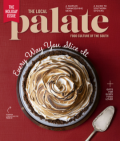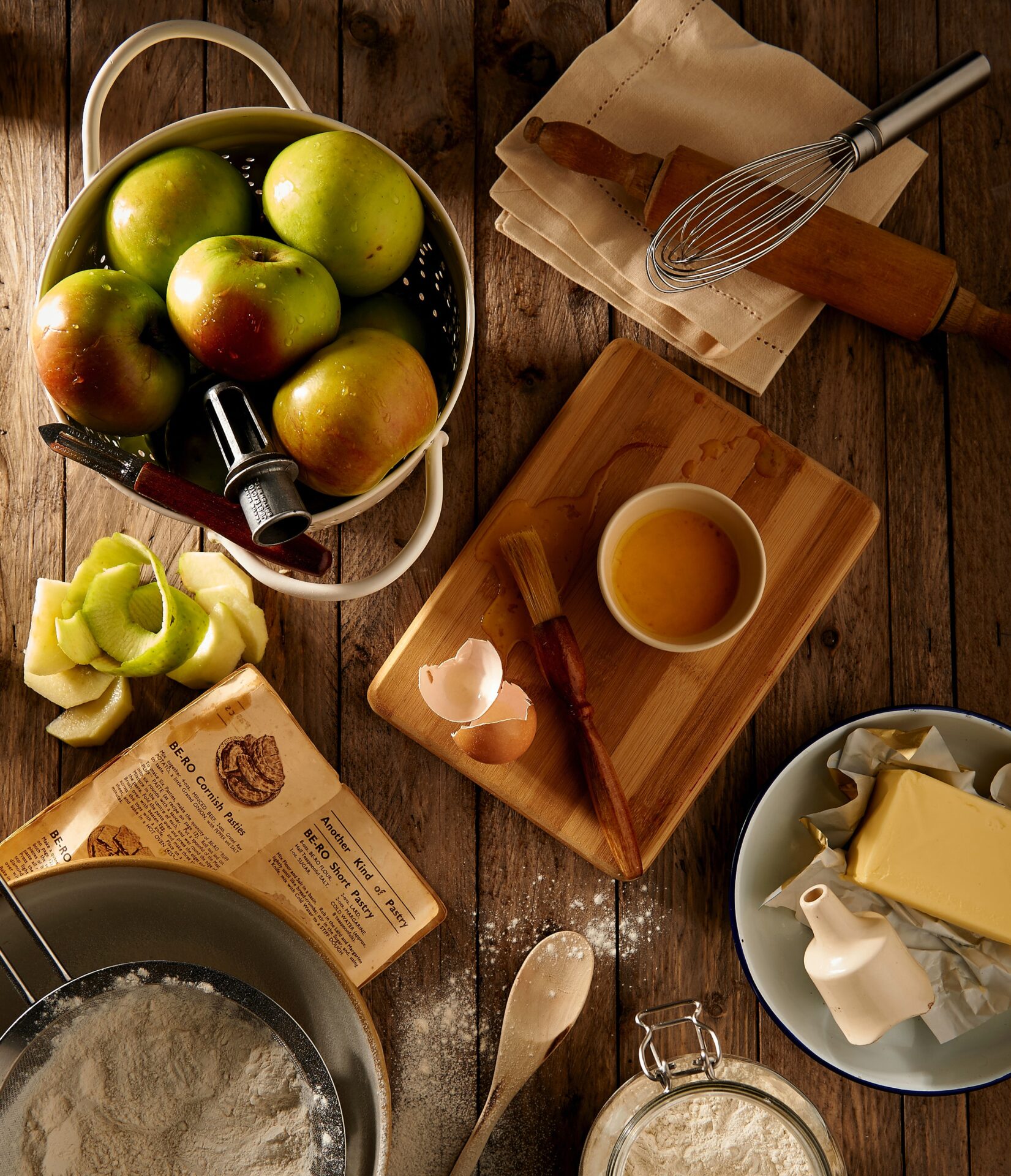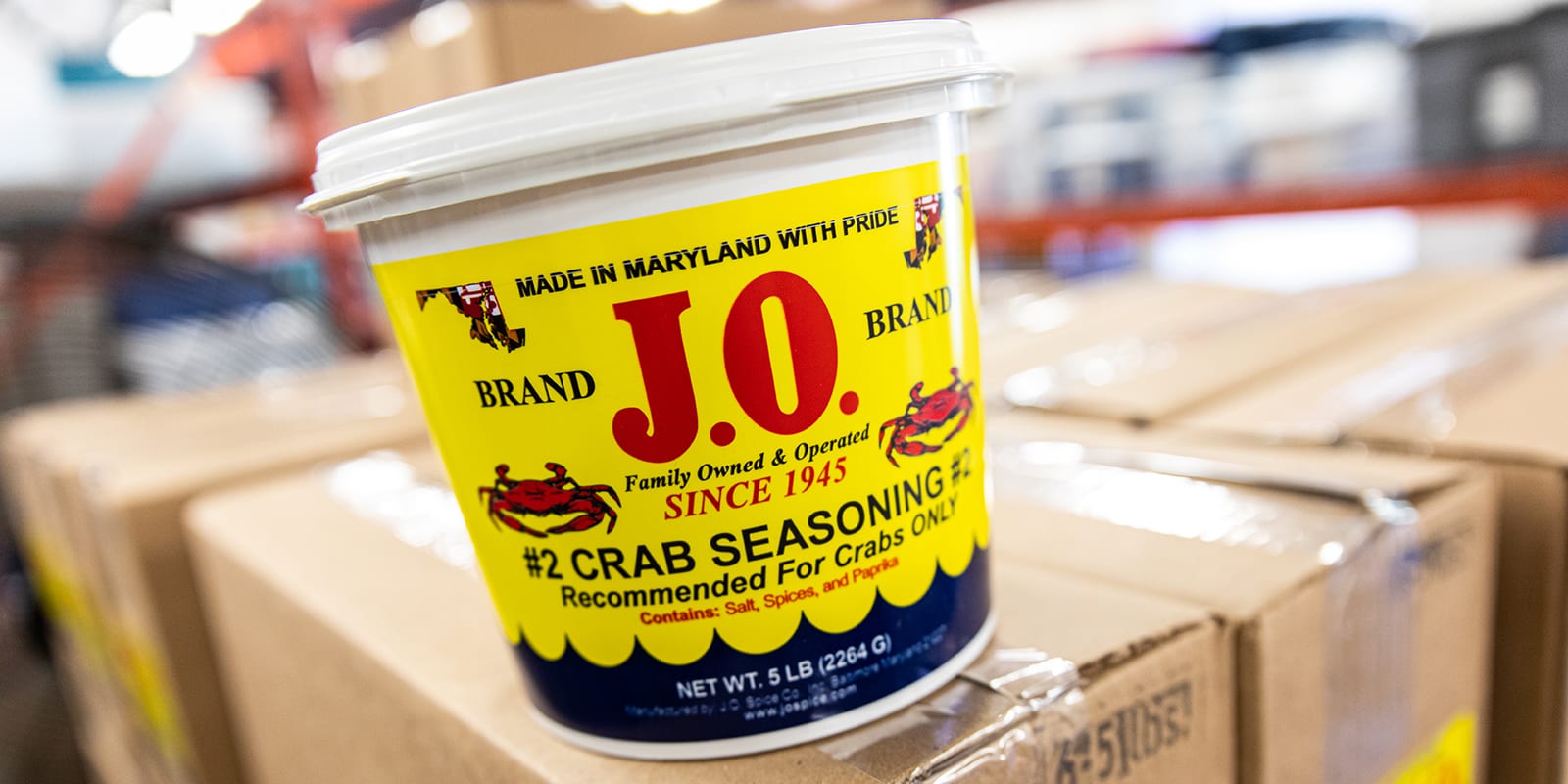Secret’s in the Spice
I was 8 years old the first time I sliced my thumb on a blue crab shell. I had been liberally dipping each lump of crabmeat into what I thought was Old Bay seasoning, and I cursed the salty seafood spice as it burned into my open cut. Before my dad even took a look, he nodded to the plastic ramekin between us and corrected me: “That’s not Old Bay, sweetheart,” he said. “That’s J.O.”
How many times had I mistaken one fiery orange seasoning for the other? And how could he tell the difference? Turns out he knew it by smell. My father inhaled J.O. Spice all day long while waiting tables as a teenager at the Crab Claw in St. Michael’s, Maryland. Every summer morning in that restaurant kitchen, a new one-hundred-pound drum of J.O. was popped open like a fresh tennis ball can just as the steamer hit a simmer and the local watermen hoisted away their bushel baskets.
That exact same J.O. perfume follows Tyler Ports home after a long day of spice-mixing at his family’s plant in Halethorpe, Maryland, just five miles southwest of Baltimore’s Inner Harbor. Tyler, a gregarious and hardworking 23-year-old, who says he shakes J.O. on everything from popcorn to late-night frozen pizza, is the great grandson of Dot and James Ozzle (J.O.) Strigle, who began J.O. Spice Company more than seventy-four years ago. While the company has always operated in Maryland, the Strigles’ spice originated one hundred miles south of Baltimore on Virginia’s Tangier Island, a three-mile islet of crab shanties, egrets, and brackish marsh that is ever so slowly sinking into the Chesapeake Bay. J.O. and Dot were both born and raised on Tangier, where their families worked the water for a living––waking before dawn to fish, dredge oysters, or trap blue crabs, depending on the season—as most of Tangier’s 700 residents still do today. Over the years, each island family developed its own style of pantry-blend seafood spice. In 1945, J.O. decided to market his to the big city of Baltimore—unwittingly preserving a bit of Tangier’s vanishing culture for decades and generations to come.

The Strigles opened a tiny shop on Pratt Street where they hand-mixed spices in a porcelain basin and sold custom blends at nearby seafood markets. As the company grew, they relocated south to Halethorpe, where the warehouse and retail store still stand, the shelves stocked with crab spice, steak rub, shrimp batter, laser-engraved crab mallets, stainless-steel steamer pots, and “Those who know use J.O.” T-shirts. When J.O. passed away in 1974, Dot and her daughter Jane took over. Today the company is run by third-generation owners Don and Ginger Ports, their three children, and a full-time staff of twenty.

On a single day, the warehouse team makes roughly 30,000 pounds of their bestselling original blend, J.O. Spice No. 2—the seasoning used at some of Maryland’s most popular crab houses, including Baltimore’s L.P. Steamers, Jimmy Cantler’s in Annapolis, and Quantico’s Red Roost on Maryland’s Eastern Shore. But J.O. is not confined to the Old Line State. More than 700 restaurants from New England to the Florida Keys are just as loyal. While 70 percent of the Ports’ customers use J.O. No. 2, the company also mixes custom blends for mom-and-pop clients who prefer to follow their own recipes, making it the de facto keeper of an entire coast of secret seasoning recipes.
J.O. hasn’t changed its own secret blends since 1945. While No. 1 and No. 2 are used on everything from shrimp to potato chips, No. 2 is the restaurant favorite due to its signature steam-friendly, crab-adhering salt.
“That’s what separates it from other products,” explains Tyler, now the company’s fourth-generation warehouse supervisor. “When you’re looking at a crab and you see a big flake of salt, you know that’s J.O. Other spices melt, but salt sticks out. That’s what I think of when I think of our seasoning.” It makes sense. When J.O. Strigle was perfecting his mix in the 1940s, he wanted to create something that would specifically complement crabs. And what better complements a blue crab than the salty essence of the brackish Chesapeake it calls home?
But salt is only one of more than a dozen ingredients in the mix. And J.O.’s No.1 and low-salt blends still pack a punch. So I fling a laundry list of ingredient guesses at the guy with the keys to the recipe. Pepper? Bay leaves? Tyler confirms my first four ingredients then cuts me off at celery seed. “Alright, alright,” he says, “We oughtta stop right about there.” It’s safe to say J.O. is in good hands.
share
trending content
-
Get To Know Spartanburg, South Carolina
-
Odessa Shines Bright This Season
by TLP's Partners -
Discover Luxury in Mobile, Alabama, That Lets You Linger Longer
by TLP's Partners -
Cookbook Review: Classic Cocktail Revival
by Emily Havener -
Greensboro’s Winter Warm-Up
by TLP's Partners
More From Key Ingredient
-
Sweet Talk: The Sensuous Power of Local Honey
-
Caramel Delights
-
Jason Stanhope’s Famous Celery Salad
-
Little Bursts of Summertime
-
A Better Butter Bean









